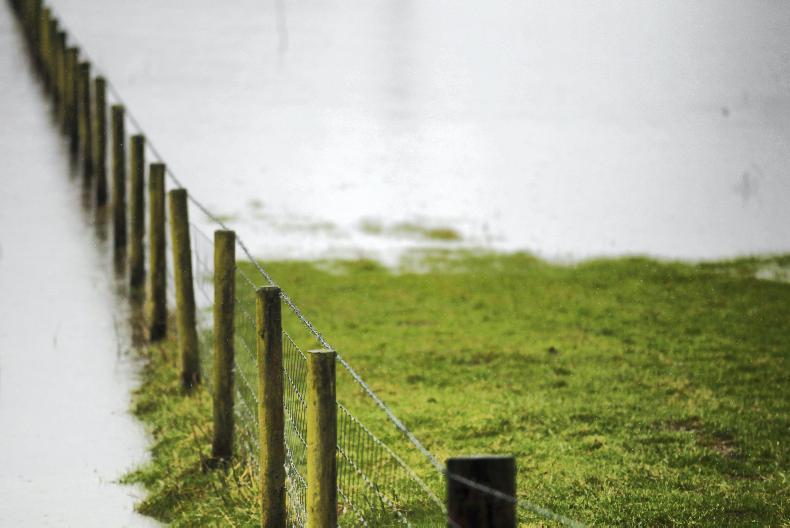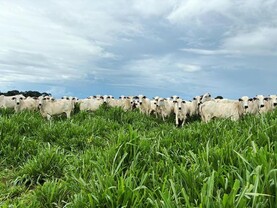Brexit could cost Irish farmers over a quarter of their incomes, or €700m a year, according to the IFA.
The IFA says tariff-free access to the UK market is vital to the viability of Irish farming. The beef, poultry, mushroom, and horticulture sectors are particularly vulnerable to a fundamental change in the trading relationship with our closest neighbour.
A comprehensive analysis, authored by Rowena Dwyer, the IFA’s chief economist, stresses that continued access to the UK market is only worthwhile if it continues to be a high-value market, and recognises the threat posed by external imports with different production standards.
Within the remaining EU-27, the priority issue for Ireland’s farmers is the maintenance of a fully funded CAP. The report shows that Ireland is the EU economy most vulnerable to Brexit, and that agriculture is the most vulnerable sector of our economy.
Sectoral dependence
The IFA report highlights the dependence of the various sectors of Irish agri-food on the UK market for exports.
Proportionately, the poultry and horticulture sectors are the most vulnerable, with 85% of all exports going to the UK. The dairy and sheep sectors are least dependent, with only one quarter of exports going to our nearest neighbour. Half our beef and pigmeat goes to the UK, with beef the biggest in value terms: €1.18bn.
North-south trade
The trading relationship between the Republic of Ireland and Northern Ireland (NI) is two-way. In total, €750m of produce from the Republic was exported to NI in 2015, with €567m going in the opposite direction.
Some 400,000 pigs go north from the Republic for slaughter, but 400,000 lambs come south for slaughter. Approximately 700m litres of milk from NI, worth €170m, is exported to the Republic. Some of this was produced on farms in the Republic, but had gone to NI for processing.
In 2015, beef exports were heavily loaded on one direction, with €130m going north and only €18m coming south. Cereals, fodder and straw move freely in both directions.
Beef
The report examines the particular problems Brexit poses for the beef sector. Their findings concur with Phelim O’Neill’s analysis in this paper in recent months, with the potential for the high-value British market to be damaged by not just tariffs for our beef, but also tariff-free trading with other nations.
Ireland currently accounts for 70% of British beef imports. As the UK is only 65% self-sufficient in beef, it will continue to import, but the possibility of trade deals with other major exporters is a major concern. The report warns that Ireland’s exports to the UK account for more than 10% of all EU cross-border trade, and if it is displaced, the entire EU beef market could be destabilised.
Other sectors
The bilateral trade between Ireland and the UK for pigmeat products means the retention of tariff-free borders is vital to the sector. Thirty-eight per cent of our pork exports go to the UK. The mushroom sector is largely dependent on the UK as an export market.
Income threat
The IFA estimates that in a worst-case scenario, incomes would fall by 26% on average.
Conclusions
The IFA holds that the EU’s Brexit negotiators must set maximisation of the future value of EU farming and food as a key objective.
The UK remaining within the Single Market would be the best outcome. Failing that, a comprehensive free trade agreement is essential, including tariff-free trade for agricultural produce, continuing equivalence of standards.
The continuance of common external tariffs for both the EU and the UK is also called for.
A strong CAP should be funded from the UK withdrawal payment and the EU-27 to ensure no shortfall in the budget. Flexibility in state aid, support for market disturbance, and increased market and distribution supports are also advocated.
The IFA highlights lamb coming from New Zealand as a clear example of complications that are presented in trying to untangle the trade relationship that has evolved between the UK, the EU and third countries.
New Zealand has long been known as an exporter of dairy and lamb product.
When the UK joined the EU in 1973, part of the deal saw access for about 230,000t of New Zealand sheepmeat.
Will the UK have to take that trade back out of the EU with it?
Some certainly, but not all, as trading patterns changed. A massive increase in the UK’s national sheep flock saw them become net exporters of sheepmeat over the last 44 years. Indeed, Ireland’s two main rivals on the prime French market were the UK and New Zealand. Not only that, Irish farmers held that New Zealand imported lamb was frequently used by retailers to drop prices here in Ireland.
In 2015, New Zealand only exported 62,000t of sheepmeat to the UK, little over one quarter of their EU quota. The swing to dairy in New Zealand has seen sheep numbers collapse from a high of 70m in 1982 to the current 27.6m.
They no longer fill their quota, with only 140,000t of sheepmeat exported to the EU in 2015, of which nearly 80,000t (about 57%) goes to the EU-27. As long as the quota remains in place, however, the potential for a re-expansion exists.
The EU and UK negotiators will have to agree some form of deal that will see the New Zealand quota into the EU.
As the IFA report puts it, “any displacement of New Zealand lamb exports which currently go to the UK market would have a negative impact on the overall value of the EU lamb market.”
Read more
Editorial: Brexit is agriculture's banking crisis
Brexit could cost Irish farmers over a quarter of their incomes, or €700m a year, according to the IFA.
The IFA says tariff-free access to the UK market is vital to the viability of Irish farming. The beef, poultry, mushroom, and horticulture sectors are particularly vulnerable to a fundamental change in the trading relationship with our closest neighbour.
A comprehensive analysis, authored by Rowena Dwyer, the IFA’s chief economist, stresses that continued access to the UK market is only worthwhile if it continues to be a high-value market, and recognises the threat posed by external imports with different production standards.
Within the remaining EU-27, the priority issue for Ireland’s farmers is the maintenance of a fully funded CAP. The report shows that Ireland is the EU economy most vulnerable to Brexit, and that agriculture is the most vulnerable sector of our economy.
Sectoral dependence
The IFA report highlights the dependence of the various sectors of Irish agri-food on the UK market for exports.
Proportionately, the poultry and horticulture sectors are the most vulnerable, with 85% of all exports going to the UK. The dairy and sheep sectors are least dependent, with only one quarter of exports going to our nearest neighbour. Half our beef and pigmeat goes to the UK, with beef the biggest in value terms: €1.18bn.
North-south trade
The trading relationship between the Republic of Ireland and Northern Ireland (NI) is two-way. In total, €750m of produce from the Republic was exported to NI in 2015, with €567m going in the opposite direction.
Some 400,000 pigs go north from the Republic for slaughter, but 400,000 lambs come south for slaughter. Approximately 700m litres of milk from NI, worth €170m, is exported to the Republic. Some of this was produced on farms in the Republic, but had gone to NI for processing.
In 2015, beef exports were heavily loaded on one direction, with €130m going north and only €18m coming south. Cereals, fodder and straw move freely in both directions.
Beef
The report examines the particular problems Brexit poses for the beef sector. Their findings concur with Phelim O’Neill’s analysis in this paper in recent months, with the potential for the high-value British market to be damaged by not just tariffs for our beef, but also tariff-free trading with other nations.
Ireland currently accounts for 70% of British beef imports. As the UK is only 65% self-sufficient in beef, it will continue to import, but the possibility of trade deals with other major exporters is a major concern. The report warns that Ireland’s exports to the UK account for more than 10% of all EU cross-border trade, and if it is displaced, the entire EU beef market could be destabilised.
Other sectors
The bilateral trade between Ireland and the UK for pigmeat products means the retention of tariff-free borders is vital to the sector. Thirty-eight per cent of our pork exports go to the UK. The mushroom sector is largely dependent on the UK as an export market.
Income threat
The IFA estimates that in a worst-case scenario, incomes would fall by 26% on average.
Conclusions
The IFA holds that the EU’s Brexit negotiators must set maximisation of the future value of EU farming and food as a key objective.
The UK remaining within the Single Market would be the best outcome. Failing that, a comprehensive free trade agreement is essential, including tariff-free trade for agricultural produce, continuing equivalence of standards.
The continuance of common external tariffs for both the EU and the UK is also called for.
A strong CAP should be funded from the UK withdrawal payment and the EU-27 to ensure no shortfall in the budget. Flexibility in state aid, support for market disturbance, and increased market and distribution supports are also advocated.
The IFA highlights lamb coming from New Zealand as a clear example of complications that are presented in trying to untangle the trade relationship that has evolved between the UK, the EU and third countries.
New Zealand has long been known as an exporter of dairy and lamb product.
When the UK joined the EU in 1973, part of the deal saw access for about 230,000t of New Zealand sheepmeat.
Will the UK have to take that trade back out of the EU with it?
Some certainly, but not all, as trading patterns changed. A massive increase in the UK’s national sheep flock saw them become net exporters of sheepmeat over the last 44 years. Indeed, Ireland’s two main rivals on the prime French market were the UK and New Zealand. Not only that, Irish farmers held that New Zealand imported lamb was frequently used by retailers to drop prices here in Ireland.
In 2015, New Zealand only exported 62,000t of sheepmeat to the UK, little over one quarter of their EU quota. The swing to dairy in New Zealand has seen sheep numbers collapse from a high of 70m in 1982 to the current 27.6m.
They no longer fill their quota, with only 140,000t of sheepmeat exported to the EU in 2015, of which nearly 80,000t (about 57%) goes to the EU-27. As long as the quota remains in place, however, the potential for a re-expansion exists.
The EU and UK negotiators will have to agree some form of deal that will see the New Zealand quota into the EU.
As the IFA report puts it, “any displacement of New Zealand lamb exports which currently go to the UK market would have a negative impact on the overall value of the EU lamb market.”
Read more
Editorial: Brexit is agriculture's banking crisis






 This is a subscriber-only article
This is a subscriber-only article










SHARING OPTIONS: